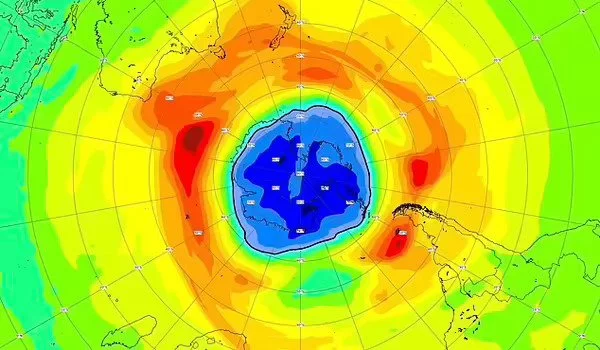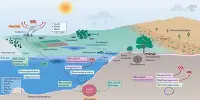According to new research, ozone in the lower atmosphere, in particular, contributed more to warming in the Southern Ocean, which absorbs much of the planet’s excess heat, than previously thought. According to the findings, ozone is more than just a pollutant; it may also play a role in climate change.
According to new research, ozone may be weakening one of the Earth’s most important cooling mechanisms, making it a more significant greenhouse gas than previously thought. According to a new study, changes in ozone levels in the upper and lower atmosphere were responsible for nearly one-third of the warming observed in ocean waters bordering Antarctica in the second half of the twentieth century.
The Southern Ocean’s rapid and deep warming has an impact on its role as one of the primary regions for absorbing excess heat as the planet warms. The majority of this warming was caused by increased ozone levels in the lower atmosphere. Ozone, one of the main components of smog, is already a dangerous pollutant, but new research indicates that it may also play a significant role in driving climate change in the coming years.
Ozone close to Earth’s surface is harmful to people and the environment, but this study reveals it also has a big impact on the ocean’s ability to absorb excess heat from the atmosphere. These findings are an eye-opener and hammer home the importance of regulating air pollution to prevent increased ozone levels and global temperatures rising further still.
Dr. Michaela Hegglin.
“Ozone close to Earth’s surface is harmful to people and the environment, but this study reveals it also has a big impact on the ocean’s ability to absorb excess heat from the atmosphere,” said Dr. Michaela Hegglin, an Associate Professor in atmospheric chemistry and one of the study’s authors.
“These findings are an eye-opener and hammer home the importance of regulating air pollution to prevent increased ozone levels and global temperatures rising further still.” The new research by an international team of scientists, and led by the University of California Riverside, is published in Nature Climate Change.
The team used models to simulate changes in ozone levels in the upper and lower atmosphere between 1955 and 2000, to isolate them from other influences and increase the currently poor understanding of their impact on the Southern Ocean heat uptake.

These simulations demonstrated that a decrease in ozone in the upper atmosphere and an increase in ozone in the lower atmosphere both contributed to the warming seen in the upper 2km of ocean waters at high latitudes caused by overall greenhouse gas increases.
They discovered that increased ozone in the lower atmosphere was responsible for 60% of the overall ozone-induced warming observed in the Southern Ocean during the study period, far more than previously thought. This was surprising because increases in tropospheric ozone are commonly thought of as a climate forcing in the Northern hemisphere because that is where the majority of pollution occurs.
In the 1980s, a hole in the ozone layer high in the atmosphere over the South Pole was discovered due to damage caused by chlorofluorocarbons (CFCs), a gas used in industry and consumer products. The ozone layer is critical because it prevents harmful ultraviolet radiation from reaching the Earth’s surface. This discovery resulted in the Montreal Protocol, an international agreement to phase out CFC production.
Dr. Hegglin said: “We have known for a while that ozone depletion high in the atmosphere has affected surface climate in the Southern Hemisphere. Our research has shown that ozone increases in the lower atmosphere due to air pollution, which occurs primarily in the Northern Hemisphere, and ‘leaks’ into the Southern Hemisphere, is a serious problem as well.
“There is hope to find solutions, and the success of the Montreal Protocol at cutting CFC use shows that international action is possible to prevent damage to the planet.”
Ozone is formed in the upper atmosphere as a result of the interaction of oxygen molecules with UV radiation from the sun. It forms in the lower atmosphere as a result of chemical reactions between pollutants such as vehicle exhaust fumes and other emissions.
Changes in ozone concentrations in the atmosphere influence westerly winds in the Southern Hemisphere, as well as contrasting levels of salt and temperature near the ocean’s surface. Both have different effects on ocean currents, which affects ocean heat uptake.
















